Stargazing in New Hampshire
Due to the state's minimal light pollution and clear skies, the night sky in New Hampshire offers exceptional views of stars, planets, and even galaxies.
New Hampshire, also known as the “Switzerland of America” is Maine’s neighboring state. Its location in the northeastern United States allows for excellent views of the northern hemisphere’s night sky, including the Milky Way, and the Aurora Borealis (Northern Lights) during certain times of the year
In a day and age where light pollution is slowly fading our night sky away, places like New Hampshire offer a rare opportunity to see the night sky in all its natural splendor. It gives us a chance to reconnect with the natural world and experience the beauty of the vast expanse of space in a way that is becoming increasingly difficult to find.
Whether you are local to New Hampshire or just visiting, you’ll want to make sure you are prepared before embarking on your stargazing adventure. In this article, we’ll provide tips on the best locations and times to go, what gear you should bring with you, and a plethora of information that can help you make the most of your experience.
But first, let’s see what makes New Hampshire a good place for stargazing.
8 Reasons why New Hampshire is a good place for stargazing
- It has 93 state parks properties.
- It has two national parks
- The average bottle scale rating in the region is 3.
- On average, there are 133 rainy days and 199 sunny days.
- There are 2 astronomy societies to join.
- There is a weekly open observing session from January to March and two annual star parties open to the public.
- The low population density results in a lower overall light pollution level and steadier atmospheric conditions.
- Numerous outreach programs are held throughout the state to promote stargazing and the preservation of New Hampshire dark skies.
The best places to stargaze in New Hampshire
#1 Appalachian National Scenic Trail
The Appalachian National Scenic Trail is a 2,200-mile footpath that spans 14 states from Maine to Georgia, passing through various natural landscapes and wilderness areas. Due to its remote locations and minimal light pollution, it is a great place for stargazing. Hiking along the trail also provides opportunities for multi-day backpacking trips with overnight camping, allowing for extended periods of stargazing.
The trail crosses through several designated Dark Sky Parks and nearby areas with low levels of light pollution, providing excellent visibility of stars and other celestial objects. Additionally, the Appalachian Trail Conservancy offers resources and recommendations for stargazing along the trail.
- Website: https://www.nps.gov/appa/index.htm
- Bortle Scale Rating: Class 3
- Get Directions
- How far is it: 75 miles from Manchester | 92 miles from Nashua | 61 miles from Concord
- Opening Times: The park is open 24 hours.
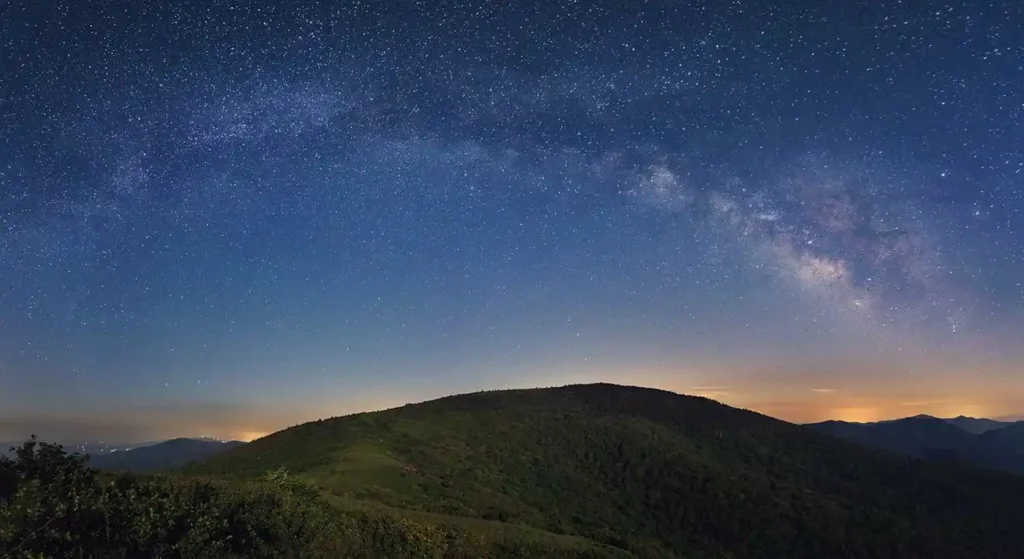
The milky way spans the entire sky. Image courtesy of appalachiantrail.org
#2 Saint-Gaudens National Historical Park (SAGA)
Although the Saint-Gaudens National Historical Park is primarily known for its preserved home, gardens, and studios of Augustus Saint-Gaudens, it also offers an excellent opportunity for stargazing. The park is located in Cornish, New Hampshire, 0.5 miles off New Hampshire Route 12A, far away from the light pollution of nearby towns and cities.
Visitors can enjoy two hiking trails that explore the park’s natural areas, and after dark, the clear night sky is perfect for observing stars and constellations. On special occasions, the park also hosts stargazing events and astronomy-related programs, making it a great and safe destination for anyone interested in stargazing and astronomy.
Although the park closes at an early hour of 4:30 pm, there are still some areas on the outskirts of the park that provide excellent stargazing opportunities.
- Website: https://www.nps.gov/saga/index.htm
- Bortle Scale Rating: Class 3
- Get Directions
- How far is it: 74 miles from Manchester | 19 miles from Nashua | 17.7 miles from Concord
- Opening Times: 9 am – 8 pm
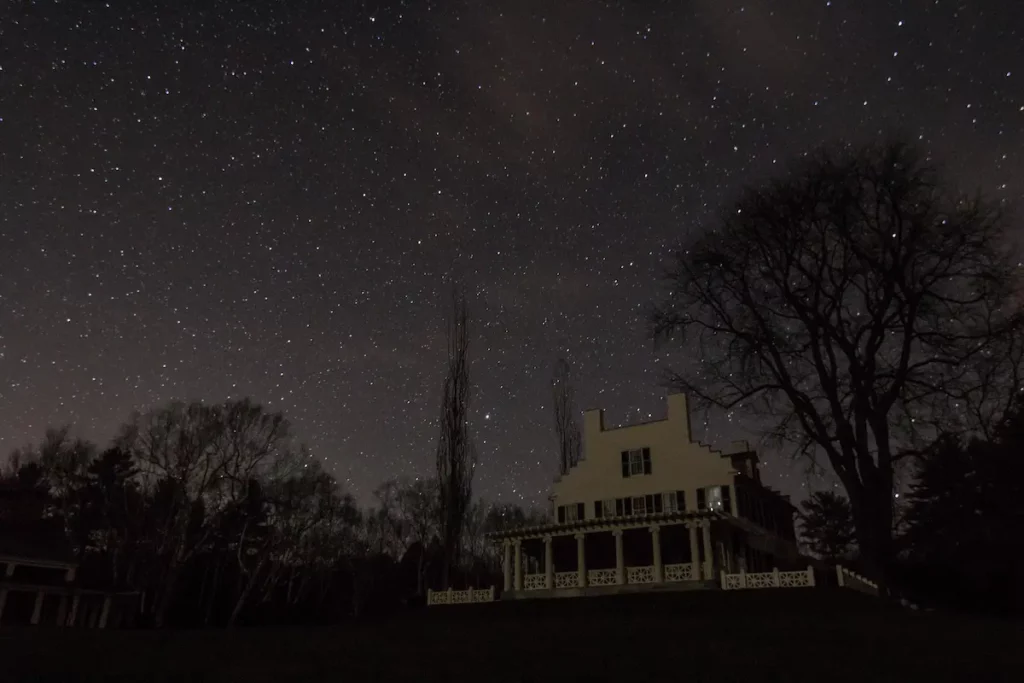
Image courtesy of Saint-Gaudens National Historical Park.
#3 Echo Lake State Park
Echo Lake in Echo Lake State Park, New Hampshire is an ideal location for stargazing due to its remote location and natural surroundings. The lake is situated away from major cities, which allows for minimal light pollution and darker skies. The surrounding mountainous terrain also helps to block out any light pollution from nearby towns.
Additionally, for those who would like to spend more time stargazing, there is a campground available at Echo Lake State Park. This makes it a convenient spot for visitors who wish to set up their telescopes and engage in longer observing sessions, without the need to travel back and forth from a distant location.
- Website: https://www.nhstateparks.org/visit/state-parks/echo-lakes-state-park
- Bortle Scale Rating: Class 2
- Get Directions
- How far is it: 100 miles from Manchester | 116 miles from Nashua | 85 miles from Concord
- Opening Times: 24/7
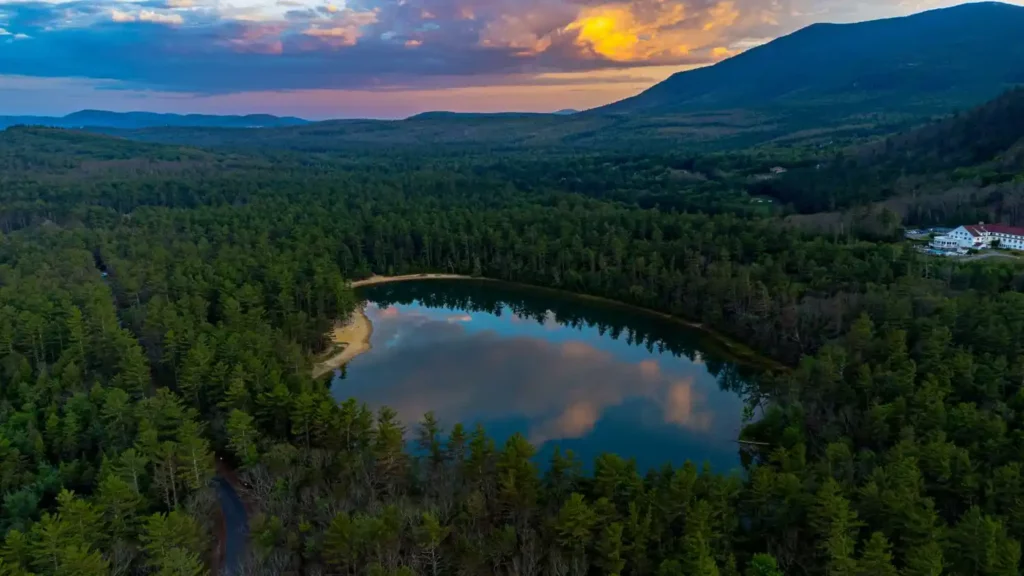
#4 Mount Washington State Park
Mount Washington is another gem of a location in New Hampshire. Since the mountain is located within the 750,000-acre White Mountain National Forest, it is surrounded by a vast area with minimal light pollution, making it an ideal location for stargazing.
The summit of the mountain is also at a high altitude, which means that it has thinner air and clearer skies, providing better viewing conditions for stargazing.
Additionally, the Mount Washington Observatory located at the summit houses a museum that provides information about the night sky and astronomy. It is run by people who have extensive knowledge of the area and they help you find the best spot to set up your telescope or binocular tripod.
However, it’s important to note that the park may be closed during the off-season, so it’s advisable to check with the park directly for the current operating schedule before planning a stargazing trip.
- Website: https://www.mountwashington.org/
- Bortle Scale Rating: Class 3
- Get Directions
- How far is it: 135 miles from Manchester | 159 miles from Nashua | 115 miles from Concord
- Opening Times: 24/7
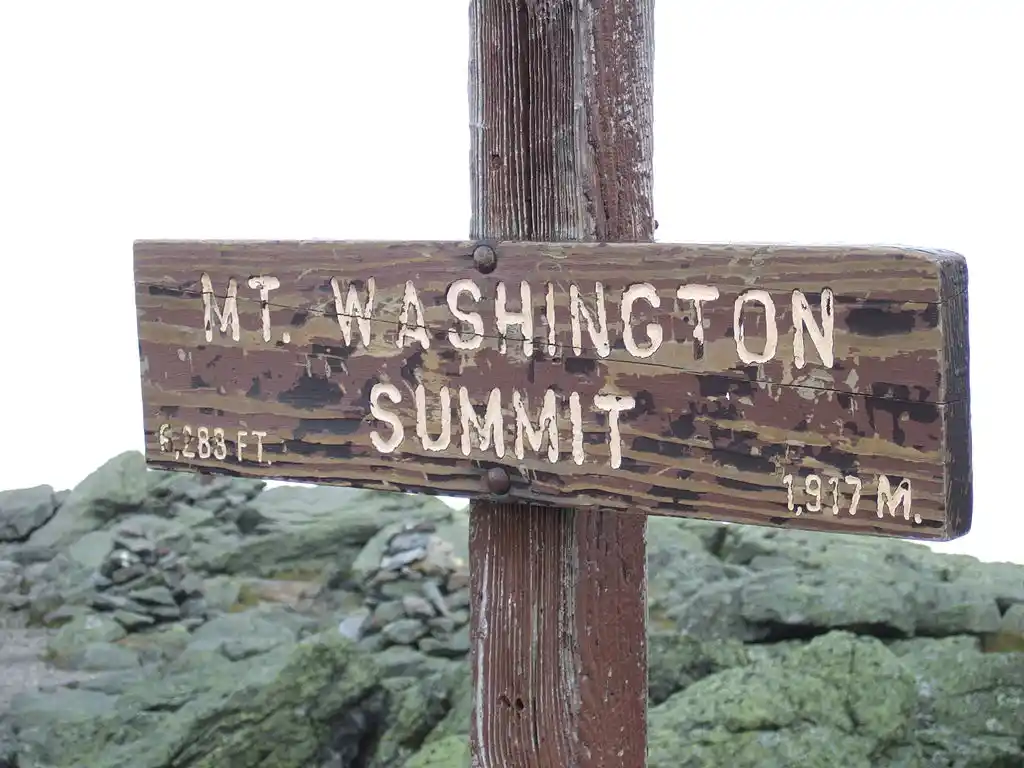
Mt Washington summit sign. Image courtesy of Bronayur
#5 Umbagog Lake State Park
The park surrounds Umbagog Lake, which is a large freshwater lake that covers over 7,000 acres and is known for its scenic beauty and recreational opportunities such as boating, fishing, and camping.
The state park provides an array of facilities and conveniences for guests such as campsites, picnic spots, boat launching areas, and hiking paths. The camping area is located close to the lakefront, offering an unobstructed view of the night sky, making it ideal for astrophotographers who wish to capture long-exposure images of the sky.
- Website: https://www.nhstateparks.org/visit/state-parks/umbagog-campground
- Bortle Scale Rating: Class 3
- Get Directions
- How far is it: 175 miles from Manchester | 190 miles from Nashua | 150 miles from Concord
- Opening Times: 24/7
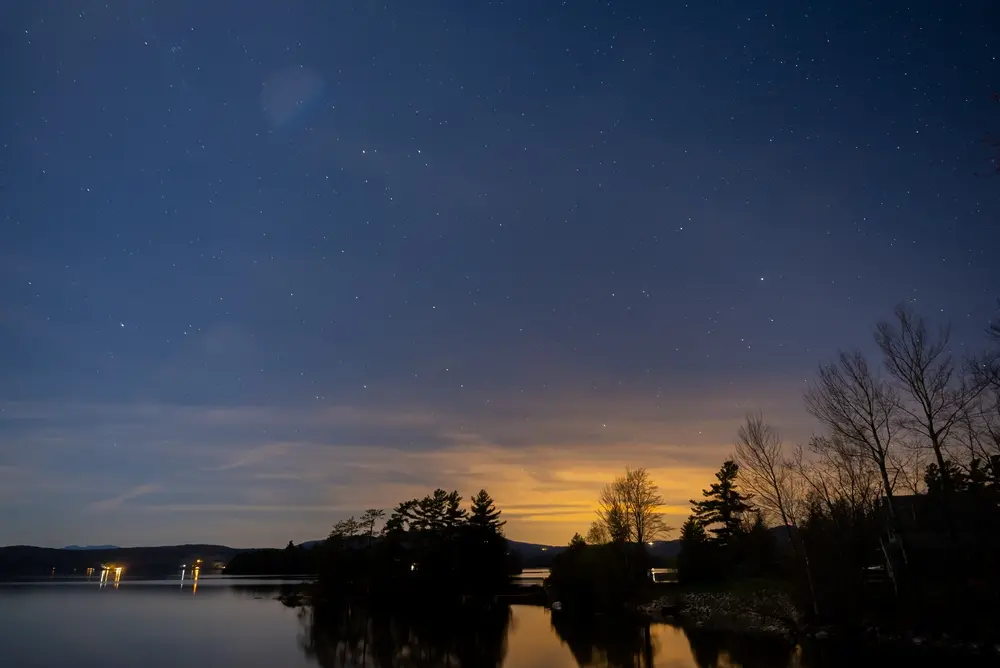
#6 Kancamagus Highway
Kancamagus Highway, also known as the Kancamagus Scenic Byway, is a 34.5-mile stretch of road that runs through the White Mountains. The road connects the towns of Lincoln and Conway and is named after Kancamagus, a Native American chief of the Penacook Confederacy.
Now you might think that a highway is a rather peculiar suggestion for stargazing but it is filled with overlooks that offer great views. (Sugar Hill, Champney Falls Trail, Rocky Gorge, and more)
- Website: https://kancamagushighway.com/
- Bortle Scale Rating: Class 4
- Get Directions
- How far is it: 86 miles from Manchester | 103 miles from Nashua | 69.4 miles from Concord
- Opening Times: 24/7
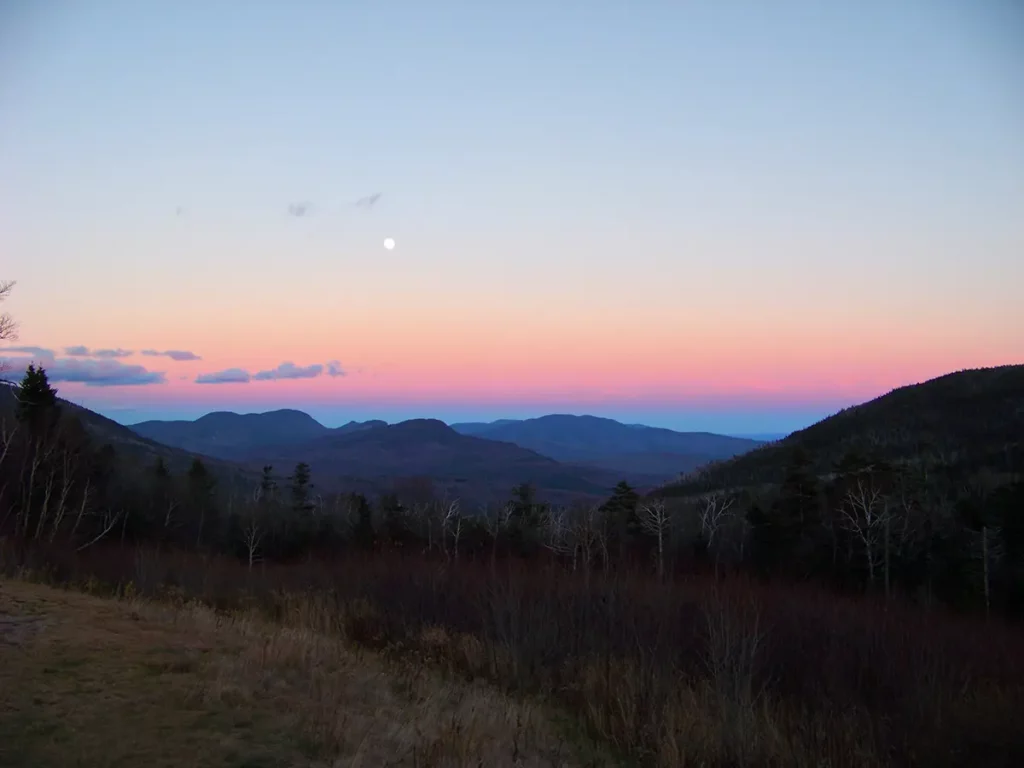
Sunset over Kancamagus Highway. Image courtesy of https://kancamagushighway.com/
Weather Forecast for tonight
Before you go planet hunting, it’s important to check the weather forecast for the night you plan to go out. Make sure there is little to no cloud cover, as it will make it very difficult to see anything.
The interactive chart below gives you a quick overview of the weather forecast in New Hampshire for tonight and the next 6 days. Plan your stargazing session accordingly!
Light pollution in New Hampshire
Light pollution refers to the excessive and misdirected artificial light that disrupts natural nighttime environments and negatively impacts wildlife, human health, and the beauty of the night sky. Light pollution in New Hampshire is relatively low, so you should be able to find dark skies almost anywhere.
Despite the growing concern of light pollution caused by the rising development of residential and commercial areas and increased dependence on outdoor lighting, New Hampshire remains a haven for star-gazers, with its stunning nighttime skies.
The below map shows you the light pollution levels across the entire state, the darker areas (low bottle scale rating) indicate the areas with the best conditions for stargazing. The only areas where light pollution is high are around Lebanon, Laconia, Concord, Manchester, and Rochester.
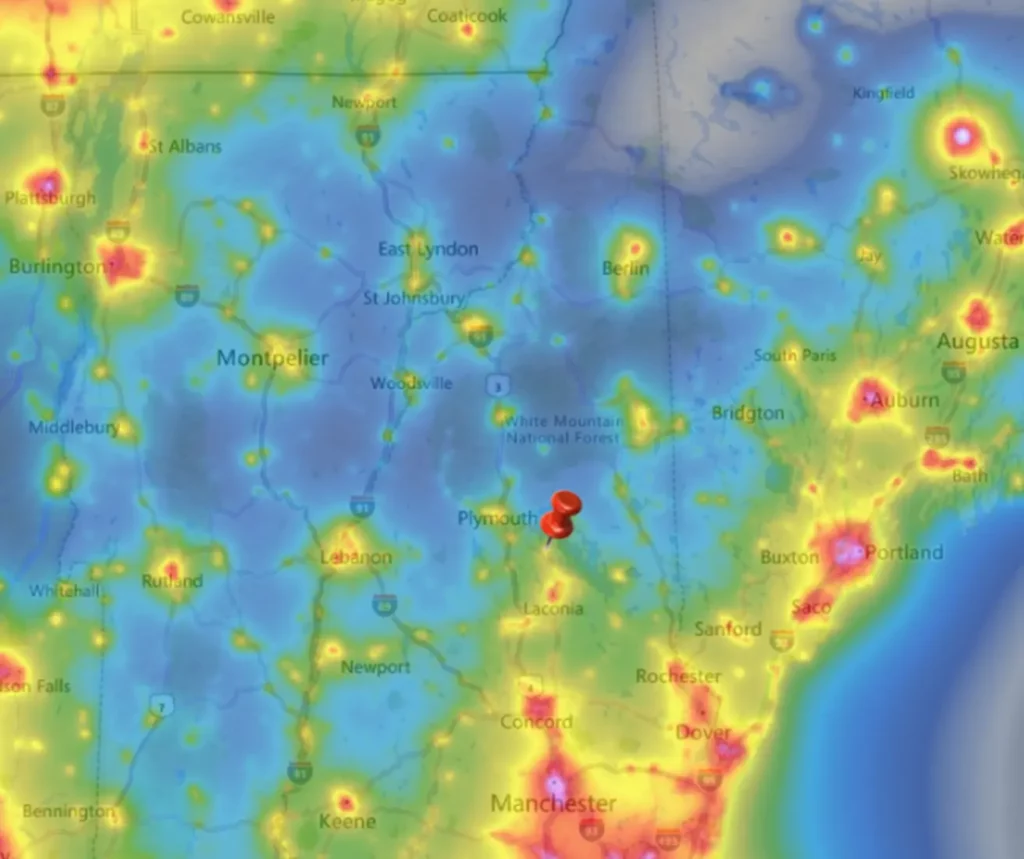
The above light pollution map for the state of New Hampshire is a real testament to how good of a place it is for stargazers.
Moongazing in New Hampshire
Moon-watching is a popular pastime in New Hampshire, where numerous dark-sky sites offer breathtaking views. During certain times of the year, lucky stargazers can witness lunar eclipses in all their glory.
With ample locations boasting clear skies, you don’t have to travel far in New Hampshire to find the perfect spot for moongazing. The lunar phase for today can be seen in the widget below. Alternatively, you can use my Moon phase calculator to find past and future moon phases.
Contrary to popular belief, the full Moon is not necessarily the best time to observe the Moon, as its brightness can be too intense when viewed through a telescope or binoculars. The waxing and waning phases of the Moon are generally better for moongazing because the details of its craters become more visible and the sunlight gives them a beautiful 3D effect.
Lastly, if you are planning to observe fainter objects like galaxies or nebulae, be sure to choose moonless nights for the best results.
This is because the Moon is very reflective and produces quite a lot of light pollution when it is half full to full. This will hinder your ability to see deep sky objects well.
Winter stargazing in New Hampshire (December, January, February)
The crisp, cold winter air produces a stunning night sky, with stars that appear brighter and colors that are more vibrant than during other seasons. Furthermore, the long winter nights provide ample time to observe the night sky before dawn and after sunset. Some of the most notable celestial objects to see in the winter sky include:
- The Orion Nebulae
- The Pleiades star cluster
- The Andromeda Galaxy
- Ursa Major and Ursa Minor (the Big Dipper and Little Dipper)
- Geminids, Ursids, Quandratids meteor showers.
However, it is important to note that the average temperature during the winter months (December to March) is between 17°F (-8.3°C) and 33°F (0.5°C), so be sure to cover up warmly!
Spring stargazing in New Hampshire (March, April, May)
For many astronomers around the world, springtime is known as “Galaxy season”. During this time of year, you’ll be able to see galaxies like Andromeda and the Triangulum Galaxy in stunning detail. Some of the most notable celestial targets in the spring night sky include the following gems:
- NGC 3628 The Hamburger Galaxy
- M64 The Black Eye Galaxy
- Mizar star
- Bode’s Galaxy
- Cigar Galaxy
- Beehive Cluster (Messier 44)
- Lyrids, Eta Equariids meteor showers
The average temperature during the spring season (April through June) is around 45°F (7°C). While still chilly, this is much more comfortable than winter temperatures.
Summer stargazing in New Hampshire (June, July, August)
The warm nights, combined with the long days, make it easier to stay up late and enjoy the night sky. Some of the most notable celestial targets in the summer night sky include the following gems:
- The Summer Triangle asterism
- Hercules and Sagittarius constellations
- Albireo
- Dumbbell Nebula (Messier 27)
- Eagle Nebula (Messier 16)
- Hercules Cluster (Messier 13)
- The Milky Way
- Delta Aquariids, Alpha Capricornids, and Perseids meteor showers.
The average temperature during the summer season (July through September) is around 73°F (23°C).
Fall stargazing in New Hampshire (September, October, November)
The nights become longer in autumn, allowing for darker skies and better visibility for stargazing. Additionally, temperatures tend to be cooler than on summer days, making it more comfortable to stay outside for long stretches of time (and less of those pesky flying bugs!). Finally, the air is often more clear and stable in the autumn months, providing excellent seeing conditions.
Some of the most notable celestial targets in the fall night sky include the following gems:
- Aquarius constellation
- The Andromeda galaxy
- Algol & Almach
- Globular cluster Messier 15
- Triangulum Galaxy (Messier 33)
- Mu Cephei & VV Cephei (one of the largest known stars)
- Draconids, Orionids, Taurids, and Leonids meteor showers.
When is the next meteor shower happening?
Meteor showers are one of the most impressive stargazing events of the year. In New Hampshire, night skies are clear, dark and full of stars, making it the perfect location to view these incredible light shows in the sky. Every year, stargazers are treated to an amazing display of shooting stars during the peak of the Perseid meteor shower in August.
With minimal light pollution, you can see hundreds of meteors streaking across the sky in a single night, making for a breathtaking and unforgettable experience. Below is the complete list of every meteor shower that can be seen every year.
- Quadrantids: January 3-4
- Lyrids: April 22-23
- Eta Aquarids: May 6
- Delta Aquariids: July 30
- Alpha Capricornids: July 30
- Perseids: August 12-13
- Draconids: October 8 – 9
- Orionids: October 21 – 22
- Taurids: November 12 – 13
- Leonids: November 17-18
- Geminids: December 14-15
- Ursids: December 22-23
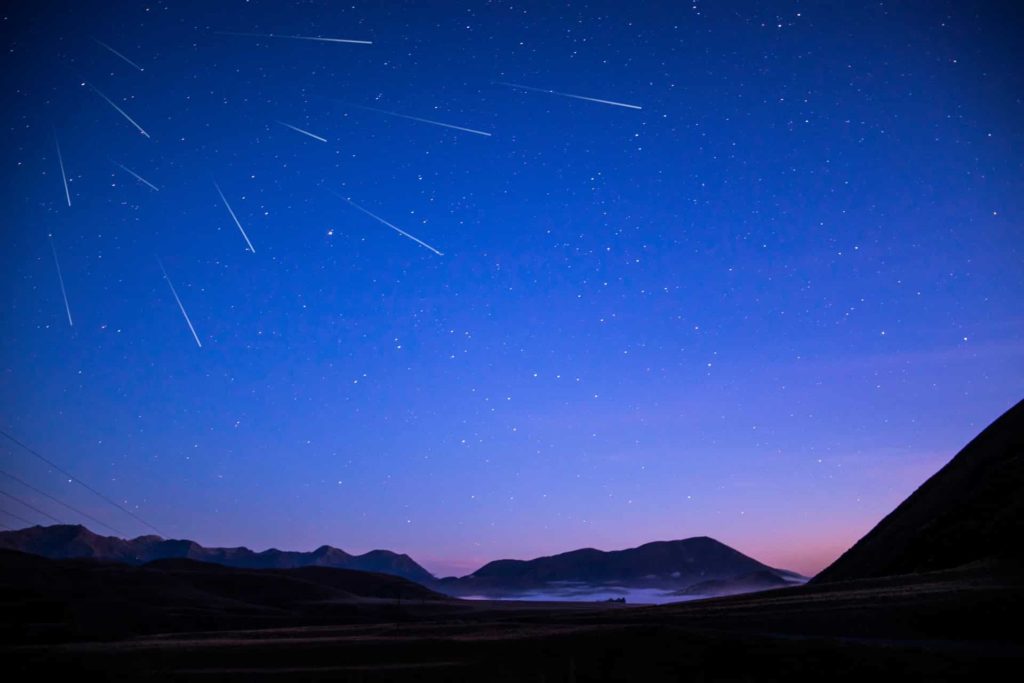
Astronomy Clubs & Societies in New Hampshire
If you are planning on stargazing in New Hampshire and need advice or have questions, joining a local astronomy club is a great way to learn more about the night sky and meet like-minded individuals. They often organize star parties where you can try out different telescopes and binoculars, learn from experts, and share great stories.
There are 2 astronomy societies in New Hampshire, including the following:
Keene Amateur Astronomers
The Keene Amateur Astronomers Club is an organization that promotes amateur astronomy through education, events, and sharing knowledge. They have an observatory, offer monthly viewing sessions, hold regular meetings at Keene State College, and provide outreach programs in partnership with the local library. The club is open to people of all skill levels and is a non-profit registered with the state of New Hampshire.
- City: Laconia
- Website: https://www.keeneastronomy.org/
- Email: secretary@keeneastronomy.orgasnne.astronomy@gmail.com
- Get Directions
New Hampshire Astronomical Society
The New Hampshire Astronomical Society is a volunteer-run non-profit organization aimed at promoting public awareness of astronomy through events and presentations. They offer free services to organizations and regularly hold “Skywatch” events open to the public and club meetings with presentations on various aspects of astronomy.
The club sponsors various events throughout the year, including all-night observing sessions and a trip to the Stellafane meeting in Vermont. Membership is open to anyone with an interest in astronomy and includes access to the club observatory, monthly newsletter, and magazine discounts for an annual fee of $30, with a reduced rate of $15 for students.
- City: Manchester
- Website: www.nhastro.com
- Email: president.2022@nhastro.com
- Address: P.O. Box 5823 Manchester, NH 03108-5823
General Stargazing Tips
- Plan ahead: Choose a few specific objects you’d like to observe and research where to find them in the night sky. Download a stargazing app or print out star maps to use as a reference.
- Wait for darkness: Stargazing is best done when it’s completely dark outside, so aim for a time at least an hour after sunset. This will allow you to see more of the stars and planets in the sky.
- Find a good spot: Look for an area with little light pollution and a clear view of the horizon. Avoid areas with tall buildings or trees that could obstruct your view.
- Make sure to know the rules for public areas as you may need a permit, to purchase a campsite, etc. Think about who is coming and what you may need/ want such as bathroom access, electricity, distance from the car, etc.
- Be sure to check the moon phase for that day before you go: A bright full moon can wash out fainter stars and planets and make your night of stargazing difficult.
- Always plan backup dates: We cannot control or completely predict the weather. It’s one of the frustrating realities of stargazing: cancellations due to weather are common.
- Set up your equipment: If you’re using a telescope, set it up and let it adjust to the outside temperature for at least 30 minutes.
- Make sure your tripod is as steady as possible. Even the slightest wobble can cause stars to appear blurred.
- Bring eyepieces of various focal lengths: Different objects in the night sky are best viewed at different magnifications, so bring a variety of eyepieces for your telescope.
- Dress warmly: Stargazing can be a cold activity, especially in the winter, so be sure to dress in layers and bring a blanket or warm coat to keep yourself comfortable.
- Most importantly, enjoy! Let your eyes soak in the beauty of our night sky!
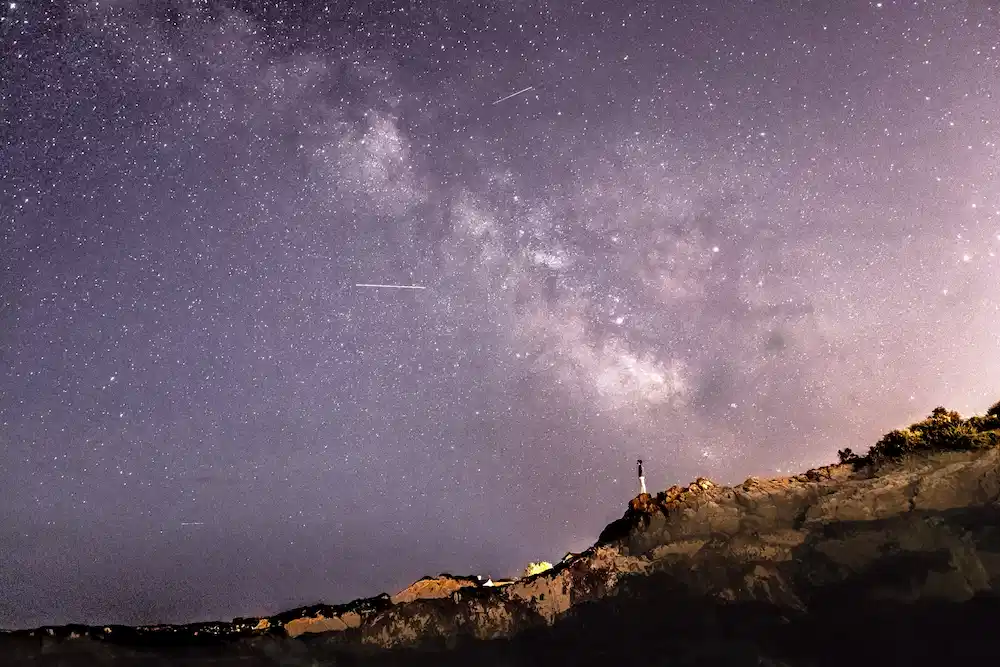
What to bring with you
- A few extra layers than you think will need (coats, blankets, etc.)
- Food and drinks to stay hydrated, caffeinated, and fed. Keep them away from any equipment (telescopes, etc.) though.
- Lighting: Flashlights or headlamps are recommended for setting up and taking down equipment, etc. and red lights will not ruin your night vision.
- Materials (star maps, night sky scavenger hunts, apps, etc.) for reference and fun.
- A comfortable foldable chair: Stargazing can be a long activity, so make sure you have a comfortable place to sit down.
- Bug spray: during the warmer months, bugs can be a nuisance. Bring along some insect repellant to keep them at bay.
- A green laser pointer: A green laser pointer can be a fun and useful tool for pointing out objects in the night sky.
- Extra batteries: If you’re using a motorized telescope or other electronic equipment, be sure to bring extra batteries in case they run out.
- A camera: you may be able to capture some beautiful photos of the night sky. Just be sure to bring a tripod to keep your camera steady during long exposure shots.
- Hand warmers: hand warmers are a godsend and a welcome addition to your stargazing kit. They can help keep your hands warm while you’re using your telescope or binoculars.
Safety tips when stargazing in nature
I have been stargazing for more than a decade and I understand that the night sky can be inviting and mysterious, but please take safety precautions when spending long hours in the dark. I have enjoyed stargazing sessions from my own backyard as well as remote and dark places.
Therefore, I have a few tips to keep in mind:
- Bring a buddy/group: Even if you’re an experienced stargazer, it’s never a bad idea to bring someone with you. It can help make the night more enjoyable and also provide safety in case something unexpected happens.
- Dress appropriately: Wear comfortable clothing that will keep you warm in lower temperatures (especially during winter months) but also be aware of bugs or other critters that can be attracted to light sources.
- Let someone know where you’ll be going: Give a family member, friend or roommate a general idea of where you’re going and when you’ll be back. What I usually do is share my live GPS location with my family so they know where I am and when I’m on the way home.
- Have the necessary supplies: Bring plenty of water, snacks and torchlights to create a comfortable environment for stargazing. Also, make sure to bring a first-aid kit in case of any emergencies.
- Be aware of your surroundings: make sure to stay away from any potential dangers such as cliffs, water bodies or cacti. Keep in mind that New Hampshire is home to coyotes, bobcats, red foxes, gray foxes, and more.
- Stay on established trails or roads: Avoid wandering off into the wilderness and bring a whistle and flashing lights so you can be found if you get lost.
- Being out in the dark can be disorienting, whilst also being a time when nocturnal animals become active. Make sure you know where you are and have an escape plan should something go wrong.
- Lastly, remember that you are in nature so always leave the place better than how you found it. With proper preparation and safety tips in mind, stargazers of any skill level can enjoy a star-filled night under the NH sky. Happy Stargazing!
Be sure to check out my guide, if you want to know more about safe stargazing practices.
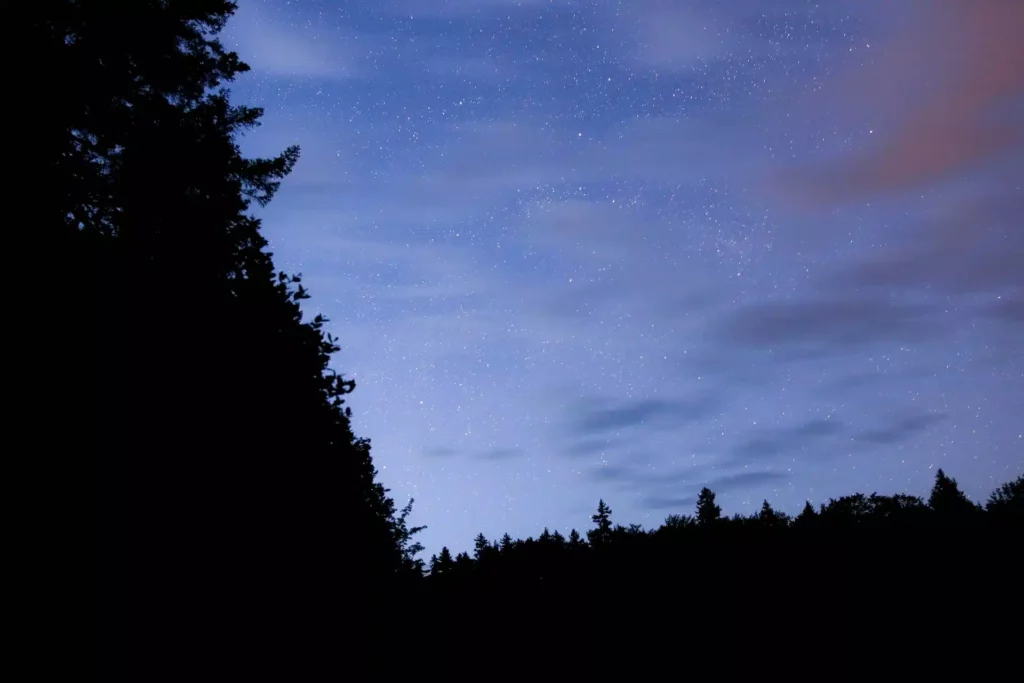
Consider going to a star party
As much as stargazing is often an individual hobby, it can also be a great group activity. A star party is a great way to learn more and connect with others who are interested in stargazing. You will likely be able to see a variety of viewing equipment and learn more about the night sky.
Star parties are usually held in remote areas where light pollution is scarce, but it’s always best to confirm with the organizers ahead of time if you have any questions. I have made countless new friends at these and I’m sure you will too.
Some of the star parties in New Hampshire include:
Annual Star Party at Saint-Gaudens National Historical Park
The annual Star Party, hosted by Saint-Gaudens National Historical Park in partnership with the Springfield Telescope Makers, offers attendees a free night sky viewing event with telescopes provided by amateur astronomers, and a chance to stargaze and appreciate the dark night skies in Cornish, New Hampshire.
- More information: https://www.nps.gov/saga/planyourvisit/star-party.htm
- Get Directions
Public Observing at Dartmouth College
Every Friday, between the month of January and March, the public is welcome to observe the night sky at the North Telescope, a small white shed behind the Shattuck Observatory on the campus of Dartmouth College.
Observing is only possible under good weather conditions, and red lights guide the way to the public observing. If you’d like to know in advance if an observing session is going ahead, you can call (603) 646-9100 and select option 2. Whilst this is not a star party per see, I felt it was still worth mentioning it in my list because using a real professional telescope is still la rather cool experience!
- More information: https://physics.dartmouth.edu/news-events/public-observing
- Get Directions
Stargazing with NHAS at Catsle in clouds
The New Hampshire Astronomical Society hosts stargazing events at a unique location, Castle in the Clouds, on three separate dates during the season. Participants can learn about stars, constellations, and planets during a talk at the Carriage House and then observe them using telescopes in a nearby field. The event is free to the public, but donations are welcome and go towards supporting future events. The location’s weather policy, directions, and parking information can be found on the event’s website.

Useful Stargazing applications
The night sky can be a tricky thing to navigate, but luckily there are some amazing astronomy applications for smartphones that make the process a lot simpler. Some go-to free applications for iOS and Android users include:
Stellarium
Stellarium is a powerful, free app with a live interactive 3D view of the night sky. Simply hold your phone in front of you and the real-time sky above you will appear on your screen. It can also be used to quickly locate stars, constellations and galaxies with a tap of the finger.
Clear Outside
Clear Outside is designed to help you plan your stargazing sessions. It features a clear sky chart that tells you the local weather conditions and times when it is expected to be the clearest at night.
If you are up for a stargazing trip away from New Hampshire, check out my guides for the neighboring states:

I’ve been fascinated by space and astronomy from a very young age. When I’m not watching space-themed documentaries, movies or TV series, I spend most of my free time in my backyard admiring the planets and galaxies with my telescope.
Discover my stargazing guides ✨
Ready to continue your stargazing adventures? My collection of stargazing guides has everything you need to know to get started.
From beginner’s guides to advanced tips, you’ll learn how to spot constellations, use a telescope, and much more. Join me on a journey of discovery and marvel at the beauty of the night sky.
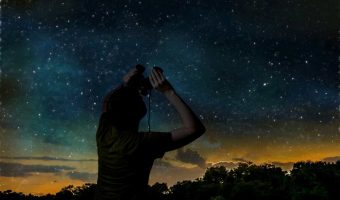
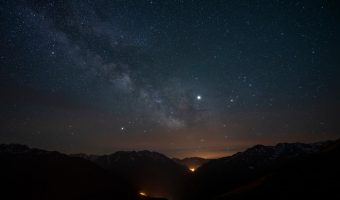
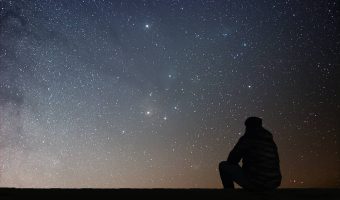
Planets are a popular observing target among amateur astronomers. Contrary to popular belief, telescopes are not always required to observe them.
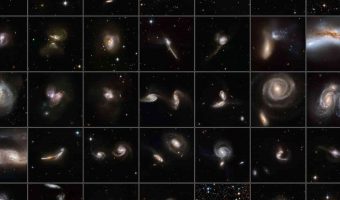
From nebulae to galaxies and beyond, this comprehensive list offers a wealth of celestial wonders to explore.
